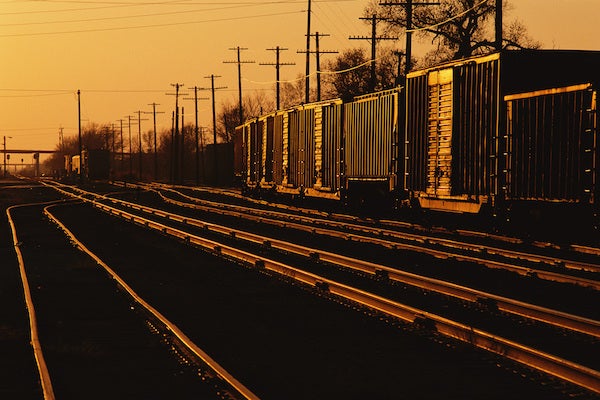This article was published in Scientific American’s former blog network and reflects the views of the author, not necessarily those of Scientific American
While much has been made of “peak coal” (U.S. coal use dropped 29% in 2015) and especially with the world’s largest coal producer (Peabody Energy) filing for bankruptcy, the shift may be apparent in the energy system (from coal to natural gas and renewable energy), but what are the effects for the transport system?
Whereas passenger travel dominates train traffic in Europe, in the U.S. it is freight, and more specifically, coal. In fact, an impressive 38.8% of rail tonnage is coal. According to the Center for Climate and Energy Solutions, “Coal is the good moved second most by weight and the good moved the most by ton-miles, and more than 70 percent of coal is moved by rail.”
Yet, as coal usage in the U.S. power sector declines, so will the number of trains needed to transport it, which is a lot of trains, often going back empty once the coal has been delivered. In February, coal train traffic went down 30%, and trains carrying petroleum and related products saw a 16.8% drop.
On supporting science journalism
If you're enjoying this article, consider supporting our award-winning journalism by subscribing. By purchasing a subscription you are helping to ensure the future of impactful stories about the discoveries and ideas shaping our world today.
This has some unexplored implications. First off, what are the consequences for Amtrak and passenger trains in general? Will this be the shift needed for passenger trains to regain some priority over the all-mighty freight train, or will the U.S. double-down on freight trains but with different goods?

With coal transport on the decline, will freight trains make way for passenger traffic? Image credit: PhotoDisc/Getty Images.
Second, as tracks do not take up much space per se, there are probably not huge space savings to be gained (compared to, say, highways suddenly going defunct) – but what about energy and emissions savings? For example, how much CO2 is used just by the transportation of coal, and how much could be saved?
Next month I’ll dig further into the numbers to see how the transforming energy system is changing train traffic, both short-term and long-term. For example, what business models will be needed to adapt to decreased or changing traffic? What role will the government play? What are the implications for other modes? And how will peak coal reshape the American train system?
This and more in Part 2 of this blog series, but for now, what do you foresee for trains in America? Share your thoughts below.